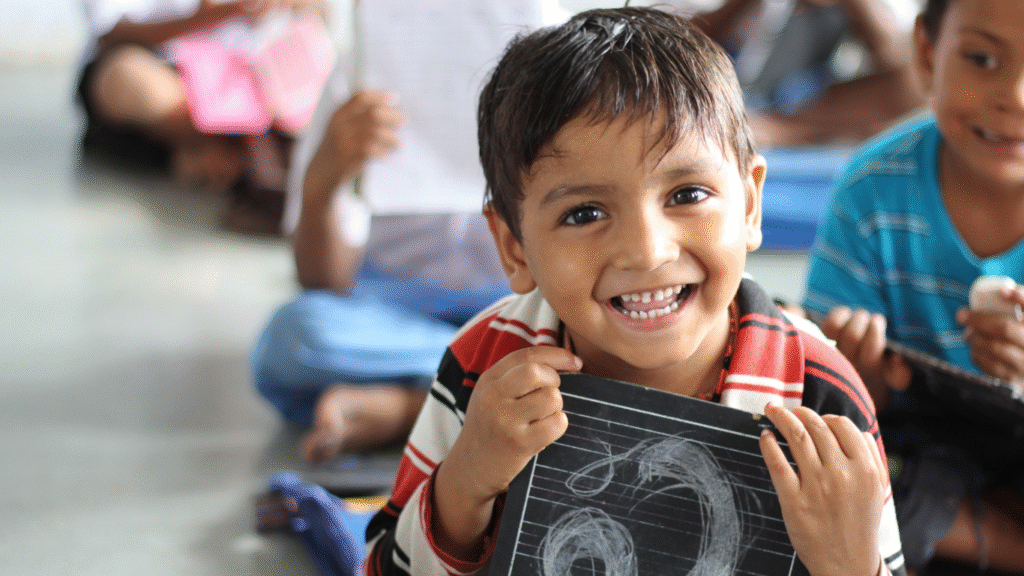The Mid Day Meal Scheme, India’s flagship school nutrition program, feeds over 120 million children daily in government schools. Launched in 1995, it aims to boost attendance, reduce hunger, and improve health for kids aged 6-14. Menus, set by states, blend local flavors with balanced nutrients, costing Rs. 5-8 per meal, per mdm.nic.in. From dal-rice to khichdi, meals are simple yet vital. In 2025, the scheme continues to shape young lives, despite challenges like funding.
Overview of the Mid Day Meal Scheme
The Mid Day Meal Scheme, under PM Poshan, serves hot meals to kids in classes 1-8 across 11.2 lakh schools, per pmposhan.education.gov.in. It tackles malnutrition and encourages school attendance, especially for girls, per unicef.org. States design menus with at least 450 calories and 12 grams of protein for primary kids, per mdm.nic.in. Meals use local staples like rice, wheat, and pulses, costing Rs. 5.29 (primary) and Rs. 7.92 (upper primary) per child, per timesofindia.indiatimes.com. In 2025, the scheme promotes health and learning, with states like Tamil Nadu adding eggs or bananas weekly, per thehindu.com, ensuring kids get affordable, hearty food daily.
Goals of the Program
The scheme aims to reduce hunger, improve nutrition, and boost school enrollment, per unicef.org. It targets poor children, cutting dropout rates by 8%, per pmposhan.education.gov.in. Meals provide energy for learning, improving focus, per mdm.nic.in. Social equality is another goal, as kids eat together, per thehindu.com. In 2025, these goals help millions grow strong, ensuring every child has a chance to thrive through free, healthy school lunches.
Role of States in Menu Planning
States create menus based on local tastes and crops, per mdm.nic.in. Tamil Nadu includes sambar-rice, while Uttar Pradesh serves roti-sabzi, per pmposhan.education.gov.in. Menus must meet calorie and protein norms, per unicef.org. States like Karnataka add milk twice weekly, per thehindu.com. Local NGOs help monitor quality, per timesofindia.indiatimes.com. In 2025, this flexibility ensures kids enjoy familiar foods, making meals a joyful part of their school day.
Sample Mid Day Meal Menus
Menus vary by state but follow nutritional guidelines. A typical weekly menu includes rice, dal, and vegetables (Monday), khichdi with curd (Tuesday), roti, sabzi, and dal (Wednesday), pulao with raita (Thursday), and chana-rice (Friday), per mdm.nic.in. Tamil Nadu adds eggs twice weekly, per thehindu.com. Uttar Pradesh includes fruits like bananas monthly, per pmposhan.education.gov.in. Meals use fortified rice and iodized salt, per unicef.org. In 2025, these dishes, costing Rs. 5-8 per child, ensure kids get hot, tasty food, keeping them full and focused, per timesofindia.indiatimes.com.
Tamil Nadu’s Weekly Menu
Tamil Nadu’s menu features rice-sambar with vegetables (Monday), egg curry with rice (Tuesday), khichdi with greens (Wednesday), vegetable pulao (Thursday), and dal-rice with boiled egg (Friday), per thehindu.com. Each meal offers 450-700 calories, per mdm.nic.in. Eggs boost protein, per unicef.org. Local spices make it tasty, per pmposhan.education.gov.in. In 2025, this menu keeps kids happy and healthy, encouraging regular school attendance with its flavorful, nutritious offerings.
Uttar Pradesh’s Weekly Menu
Uttar Pradesh serves roti, potato sabzi, and dal (Monday), rice-chana (Tuesday), khichdi with vegetables (Wednesday), roti, soyabean curry (Thursday), and rice-dal with fruit (Friday), per pmposhan.education.gov.in. Meals provide 12-20 grams of protein, per mdm.nic.in. Bananas add vitamins, per unicef.org. Simple recipes suit local tastes, per timesofindia.indiatimes.com. In 2025, this menu supports kids’ growth, offering variety and nutrition to fuel their school day.
Nutritional Goals and Benefits
The Mid Day Meal Scheme targets 450 calories and 12 grams of protein for primary kids, and 700 calories and 20 grams for upper primary, per mdm.nic.in. Meals include grains, pulses, vegetables, and oils, addressing deficiencies like anemia, per unicef.org. Fortified foods boost iron and vitamins, per pmposhan.education.gov.in. Benefits include better height-weight ratios and fewer sick days, per thehindu.com. In 2025, the scheme cuts malnutrition rates by 10%, per timesofindia.indiatimes.com, helping kids stay strong, learn better, and dream bigger.
Addressing Malnutrition
Meals tackle malnutrition, affecting 30% of Indian kids, per unicef.org. Pulses and vegetables provide iron and vitamins, reducing anemia, per mdm.nic.in. Fortified rice adds micronutrients, per pmposhan.education.gov.in. Eggs or milk in some states boost growth, per thehindu.com. Regular meals improve health in 6-12 months, per timesofindia.indiatimes.com. In 2025, this focus helps kids grow stronger, ensuring they thrive in school and beyond.
Impact on School Attendance
Free meals increase attendance by 12%, especially for girls, per unicef.org. Kids from poor families rely on these lunches, per mdm.nic.in. Schools report fewer dropouts, per pmposhan.education.gov.in. Tasty food encourages daily visits, per thehindu.com. In 2025, the scheme keeps kids in class, supporting education and equality, as every meal brings them closer to a brighter future, per timesofindia.indiatimes.com.
Challenges in Implementation
Despite success, the scheme faces hurdles. Funding delays disrupt supplies, per timesofindia.indiatimes.com. Poor kitchen hygiene in 15% of schools risks food safety, per unicef.org. Low cook wages (Rs. 1,000/month) cause staff shortages, per thehindu.com. Some states struggle with menu variety, per mdm.nic.in. Monitoring is tough in remote areas, per pmposhan.education.gov.in. In 2025, addressing these issues is key to ensuring every child gets a safe, nutritious meal daily.
Food Safety Concerns
Hygiene issues, like unclean kitchens, affect 15% of schools, per unicef.org. Contaminated food causes illness, per timesofindia.indiatimes.com. States train cooks, but oversight is weak, per mdm.nic.in. Regular inspections and clean water are needed, per pmposhan.education.gov.in. In 2025, better facilities and checks can ensure safe meals, keeping kids healthy and parents worry-free, per thehindu.com.
Funding and Staffing Issues
Funding delays halt grain or vegetable supplies, per timesofindia.indiatimes.com. Cooks earn Rs. 1,000/month, leading to shortages, per thehindu.com. Some schools lack storage, per unicef.org. Increased budgets (Rs. 12,000 crore in 2024) help, per mdm.nic.in. In 2025, timely funds and fair wages can stabilize the program, ensuring consistent, quality meals for every child, per pmposhan.education.gov.in.
Tips for Improving the Program
States can add eggs or milk weekly for protein, per unicef.org. Community gardens can supply fresh vegetables, per thehindu.com. Training cooks on hygiene and recipes boosts quality, per mdm.nic.in. Local NGOs can monitor rural schools, per pmposhan.education.gov.in. Parents’ feedback ensures accountability, per timesofindia.indiatimes.com. In 2025, these steps can make the Mid Day Meal Scheme stronger, delivering tastier, safer meals to fuel India’s young minds.



